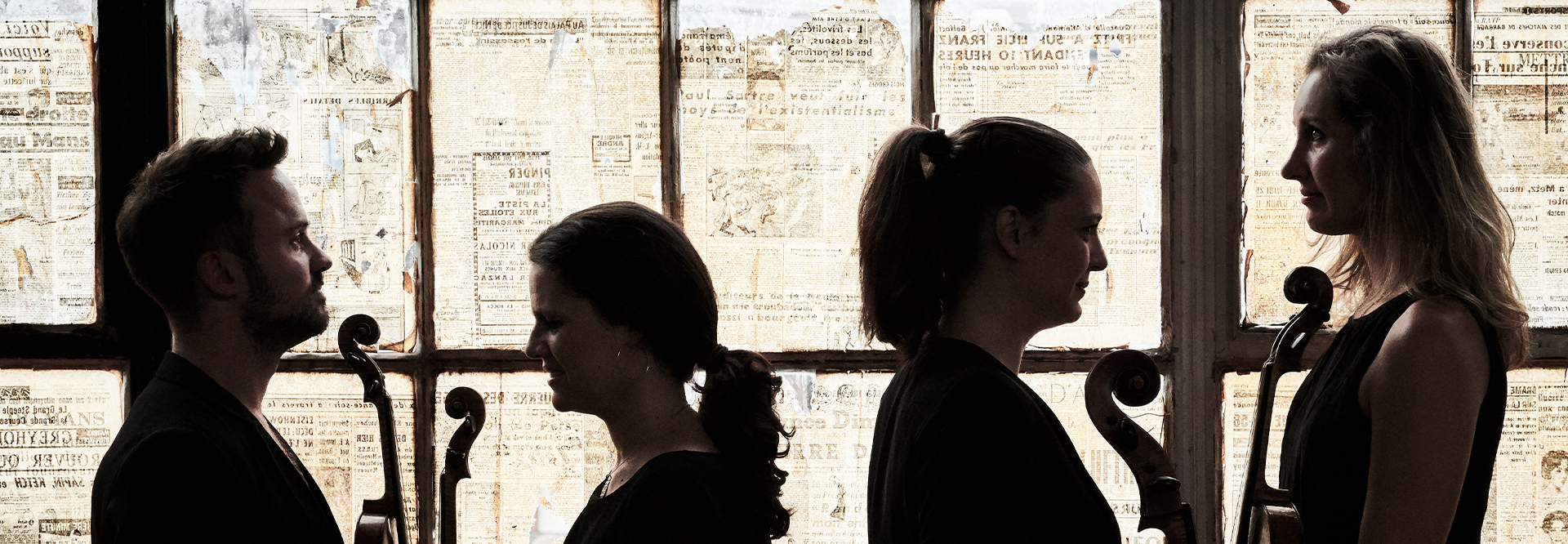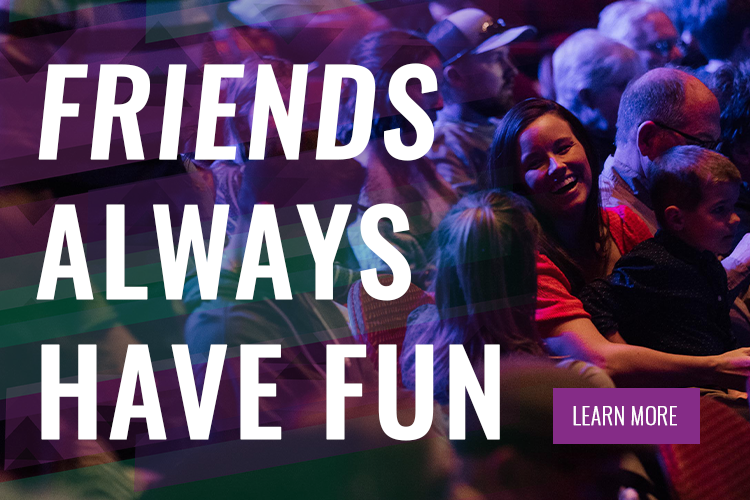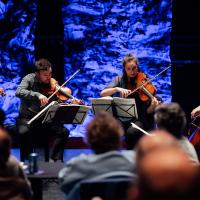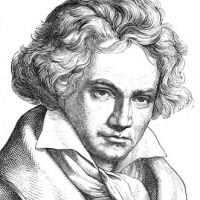String Quartet in C minor, Op. 18, No. 4
- Allegro ma non tanto
- Scherzo (Andante scherzoso quasi Allegretto)
- Menuetto (Allegretto)
- Allegro-Prestissimo
String Quartet in E-flat Major, Op. 74 ("The Harp")
- Poco adagio-Allegro
- Adagio, ma non troppo
- Presto (Piu presto quasi prestissimo) - Allegretto con Variazionni
String Quartet in B flat, Op. 130, with Grosse Fuge ending, Op. 133
- Adagio, ma non troppo-Allegro
- Presto
- Andante con moto, ma non troppo
- Alla danza tedesca (Allegro assai)
- Cavatina (Adagio molto espressivo)
- Finale: Grosse Fuge (Op. 133)
Notes About the Show
String Quartet in A major, Op. 18 No. 5
The writing of string quartets was a daunting proposition for any young composer in the Vienna of the 1790s. Between them Haydn and Mozart had raised the quartet to a supreme vehicle for ‘learned’ taste and subtle, civilised musical discourse. Not surprisingly, Beethoven was careful to establish his credentials as a composer for his own instrument, the piano, before taking up the challenge of this most exalted genre. Before he bit the bullet in 1798, Beethoven undertook a rigorous course of preparation, studying counterpoint with the venerable J. G. Albrechtsberger, and copying out several Haydn and Mozart quartets.
When the quartets of Op. 18 finally appeared in 1801, reactions were generally enthusiastic, though some conservative-minded critics found the music harsh and ‘difficult’ – an astonishing reaction to us two centuries later. It would be hard to find a more urbanely Mozartian work of Beethoven’s than the A major, No. 5. Indeed, its third movement and finale are directly modelled on Mozart’s quartet in the same key, K464, a favourite of Beethoven’s.
While the opening Allegro, in a dancing 6/8 metre, is Mozartian in spirit, it has none of the chromatic richness and ambiguity of the equivalent movement in Mozart’s quartet. The atmosphere here is of puckish, faintly bucolic elegance, though, true to form, Beethoven enjoys ruffling the music’s surface with his favourite offbeat accents. Compared with the earlier Op. 18 quartets, the imitative counterpoint is almost nonchalant, where theirs had been strenuous. A shift from E major to F sharp minor at the start of the development promises tense drama that Beethoven quickly defuses, relaxing into the key of D major over pastoral drones in the cello.
As in K464, Beethoven’s second movement is a minuet, though without Mozart’s contrapuntal and harmonic intricacy. With its delicate two-part textures, the music has a chaste, almost finicky elegance that is uniquely its own. There is a delightful foretaste of Schubert in the beery Ländler trio, roughed up by offbeat sforzandi.
The Andante’s variation theme – essentially a series of falling and rising scales – is far simpler than Mozart’s. But after five variations (of which the fourth is an exquisite, soft reharmonisation of the theme), Beethoven, like Mozart, embarks on an elaborate coda, beginning with a mysterious swerve from D to B flat: here the cello’s repeated ‘ticking’ recalls the ‘drum’ ostinato near the end of Mozart’s movement. K464 is also the inspiration behind the finale, which contrasts and then combines the quicksilver opening theme with a sustained chorale melody. Even Mozart rarely wore his polyphonic learning more lightly than Beethoven does in this scintillating movement.
String Quartet in C major, Op. 59 No. 3
It was some time during the winter of 1804-5 that Count Andreas Razumovsky, Russian ambassador to Vienna and a good amateur violinist, commissioned Beethoven to write three string quartets ‘with Russian melodies, real or imitated’. The three works were completed in 1806 and premiered the following February by the quartet led by Beethoven’s friend Ignaz Schuppanzigh. Reviewing the concert, the Viennese correspondent of the Allgemeine musikalische Zeitung wrote that ‘three very long and difficult Beethoven quartets...are attracting the attention of all connoisseurs. They are profoundly thought through and composed with enormous skill, but will not be intelligible to everyone, with the exception of the third, which by virtue of its individuality, melodic invention and harmonic power is certain to win over every educated music lover.’
It was doubtless the forthright extroversion of the outer movements and the urbanity of the minuet that made No. 3 more instantly palatable than its compaions. Yet in some ways it is the strangest work of the three. The labyrinthine slow introduction, surely modelled on Mozart’s ‘Dissonance’ Quartet, K465, goes even further than Mozart in blurring not only the tonality but also any firm sense of rhythm. Even at the start of the Allegro vivace the key of C major is initially shadowed and tentative before emerging unequivocally, with a glorious sense of release, at the first sustained forte. From here on the music is predominantly exuberant, relishing the depth and sonorous brilliance of C major. Yet the movement also has its whimsical, quizzical streak. Beethoven, typically, works wonders with the main theme’s opening two note-figure, above all at the climax of the development where it expands into a mysterious canon between upper and lower strings.
This is the only one of the ‘Razumovsky’ quartets not to include an authentic Russian melody. Paradoxically, though, the Andante con moto quasi Allegretto sounds more exotically Slavonic than anything in Op. 59 Nos 1 and 2. This is the most inscrutable movement in Op. 59, from the wailing opening theme, over the cello’s repeated pizzicato E, to the mesmerised closing bars. Amid this remote melancholy, the contrasting galant theme in C major seems like an interloper from an ancien régime drawing room.
Beethoven brings us back to earth with an almost exaggeratedly decorous minuet, a half-nostalgic, half-ironic glance back to an earlier age. In the pianissimo coda C major slips to a shadowy C minor. Then, after a last-second shift back to C major, the viola launches into a long, moto perpetuo fugal subject, initiating the most virtuosic of all Beethoven’s quartet finales. The promise of a full-blown fugue is, though, short-lived. Instead, like Mozart’s G major Quartet, K387 – and with a nod to Beethoven’s own Op. 18 No. 5 - the movement alternates stretches of ‘learned’ fugato with looser textures. Above a sketch Beethoven wrote ‘Let your deafness no longer be a secret – not even in art’. And it is surely not too fanciful to hear this torrential movement as a triumphant assertion of the will in the face of his affliction.
String Quartet in C sharp minor, Op. 131
While we might like to imagine Beethoven composing his late quartets of 1824-26 in hermetic isolation from the world, the truth is that they were created in response to a growing public demand for string quartets. While he was still wrestling with the Grosse Fuge finale of Op. 130, Beethoven received a lucrative offer from the Paris-based publisher Moritz Schlesinger for Op. 132 and 130, plus a third, as yet unwritten, quartet. This turned out to be the C sharp minor, begun in late 1825 and finished the following summer. According to Karl Holz, Schuppanzigh’s second violinist, Beethoven himself regarded the C sharp minor Quartet as his greatest. But though there are accounts of earlier private performances, including, poignantly, one to Schubert on his deathbed, it was not heard in public until 1835.
Ever unpredictable in his dealings with publishers, Beethoven eventually sold the rights not to Schlesinger but to Schott of Mainz. Anticipating Mahler’s dictum that a symphony must contain ‘the whole world’, Beethoven seems to have designed Op. 131 to embrace a vast range of forms, textures and feeling, ranging from the unearthly elegy of the opening fugue to the street tunes and knockabout humour of the Presto.
Yet Beethoven being Beethoven, he welds diversity into a profound unity. He fashions tight motivic links between the seven sections, drawing much of the material from the prominent pairs of semitones in the fugue theme (B sharp-C sharp, A-G sharp), and alluding to the fugue theme in the finale. Beyond this, the sections do not so much end as dissolve into each other, creating the impression of a vast single span that traverses various related keys before finally reasserting C sharp minor.
Beethoven’s opening fugue testifies to his studies not only of Bach’s ‘48’ but also the rarefied vocal polyphony of Palestrina. But the music ranges through a wider spectrum of tonalities than we ever find in a Bach fugue, straying as far as E flat minor and B major before settling in A major for an ethereal canonic episode for the two violins. Beethoven then builds in a series of waves to a great climax, with the cello tolling the main theme in longer note values against rising sequences in the first violin and syncopations in the inner voices.
As the music seems to ebb away on bare octaves, C sharp rises softly to D and the scherzo second movement steals in. This is in effect a continuous variation on a gently rocking melody which makes prominent play with the pairs of semitones from the fugue. After a sudden boisterous outburst the movement fades inconclusively. Then two brisk cadential chords initiate a few bars of quasi-operatic recitative, complete with cadenza-like flourishes: a brief interlude between the scherzo and the central variation movement.
The key of the variations, A major, had been prominently ‘flagged’ in the opening fugue. Wagner described the theme as ‘the incarnation of innocence’, though its layout, shared between the two violins, is anything but naive. Each of the six variations has a tendency to grow more intense and/or animated as it proceeds. Beethoven also indulges his fondness for extreme and bizarre contrasts. The third variation, for instance, begins as a dulcet canonic dialogue for viola and cello but ends in a dissonant orgy of trills. The sublime meditation of the fourth variation - a slow, spiritualised waltz - culminates in a chain of trills. Then, with a sudden shift from A to C major, Beethoven launches a coda that becomes riotously infested with trills before dissolving into the ether.
A blunt E major cello arpeggio kick-starts the fifth movement, a duple-time scherzo full of zany disruptions of rhythm, dynamics and tempo. The Trio section - a smoother, less frenetic variant of the opening tune - comes round twice and feints at yet another reprise; but Beethoven deflects this into a madcap, slightly eerie coda where the instruments play the main theme sul ponticello (ie with the bows close to the bridge).
The sixth section is a brief but intensely poignant Adagio quasi un poco Andante that functions as an introduction to the finale. Here sonata form - used for the only time in the work - is the vehicle for the most dynamic and confrontational music in the quartet. C sharp minor makes its first reappearance since the fugue; and the sense that the finale completes a mighty circle is reinforced by its tight thematic and tonal links with earlier movements, most obviously in the main theme’s piano answering phrases, which reorder the fugue’s first four notes.
Notes by Richard Wigmore

































